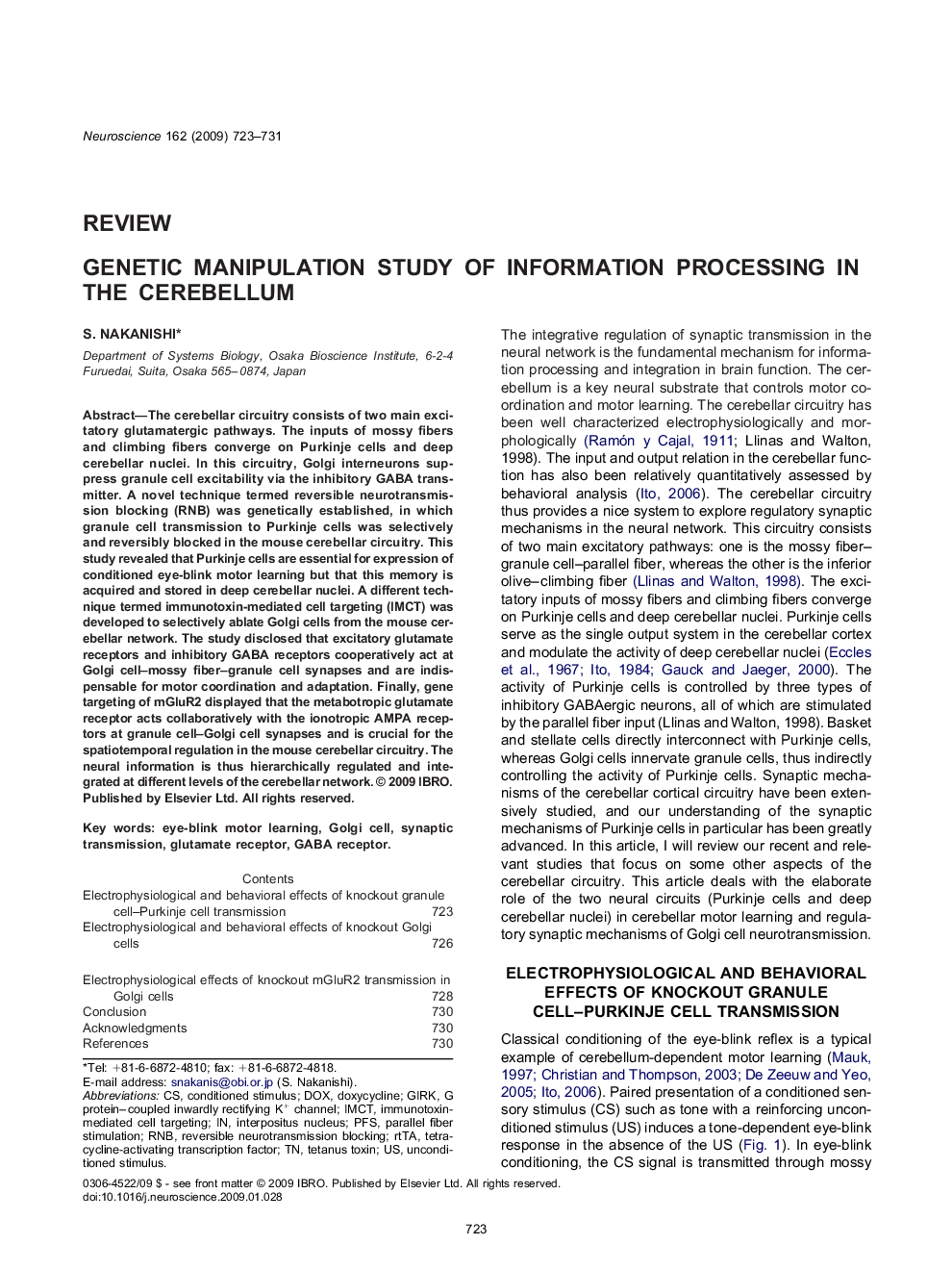| Article ID | Journal | Published Year | Pages | File Type |
|---|---|---|---|---|
| 6278100 | Neuroscience | 2009 | 9 Pages |
Abstract
The cerebellar circuitry consists of two main excitatory glutamatergic pathways. The inputs of mossy fibers and climbing fibers converge on Purkinje cells and deep cerebellar nuclei. In this circuitry, Golgi interneurons suppress granule cell excitability via the inhibitory GABA transmitter. A novel technique termed reversible neurotransmission blocking (RNB) was genetically established, in which granule cell transmission to Purkinje cells was selectively and reversibly blocked in the mouse cerebellar circuitry. This study revealed that Purkinje cells are essential for expression of conditioned eye-blink motor learning but that this memory is acquired and stored in deep cerebellar nuclei. A different technique termed immunotoxin-mediated cell targeting (IMCT) was developed to selectively ablate Golgi cells from the mouse cerebellar network. The study disclosed that excitatory glutamate receptors and inhibitory GABA receptors cooperatively act at Golgi cell-mossy fiber-granule cell synapses and are indispensable for motor coordination and adaptation. Finally, gene targeting of mGluR2 displayed that the metabotropic glutamate receptor acts collaboratively with the ionotropic AMPA receptors at granule cell-Golgi cell synapses and is crucial for the spatiotemporal regulation in the mouse cerebellar circuitry. The neural information is thus hierarchically regulated and integrated at different levels of the cerebellar network.
Keywords
Related Topics
Life Sciences
Neuroscience
Neuroscience (General)
Authors
S. Nakanishi,
